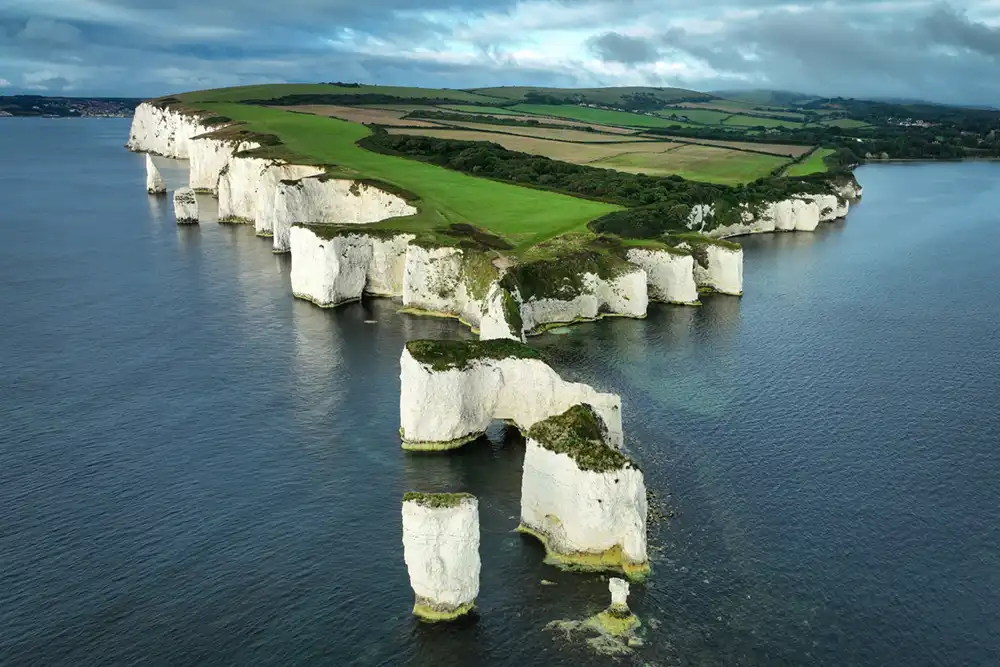
Emily Sherwin, a 20-year-old diver who went missing during a dive off the south coast of England was ‘caught in a vortex’, according to a Coroner’s report made at the inquest into her disappearance.
Sherwin, from Poole, Dorset, who was studying marine conservation at the University of Plymouth, was diving with a buddy off Old Harry Rocks near Swanage on 23 July 2024.
The pair were separated after becoming trapped in an underwater vortex, which prevented Sherwin from surfacing and reduced visibility to less than 1 metre. A massive search and rescue operation was launched, but tragically, her body has never been found.
Sherwin’s buddy, 23-year-old Emily Pryor, told Dorset Coroner’s court that she and Sherwin were caught in a vortex at a depth of approximately 7m, which spun them around, causing them to become disoriented.

‘We both went down below the surface and were horizontal facing each other and holding each other’s arms,’ said Pryor. ‘I signalled to Emily that something was wrong and pointed to my ears and gave her the signal to go back up. I did this two or three times.
‘At this point we got caught in a vortex and started to spin around. I wasn’t able to check my dive computer due to the spinning. I just felt disorientated.
‘We held each other’s arms and I signalled to go up but I did not see her do it back. Visibility was poor and I could only see about one metre. I could see Emily was vertical and not rising. At this point things get a bit hazy as it all happened so fast.
‘She was vertical and her regulator was out of her mouth. She was sinking at the time and I attempted to reach down but that was not possible. At this point I could feel some water seeping into my mask.
‘We hit the bottom of the seabed hard and I was unable to see Emily. I ascended to the surface quickly and spoke to the skipper, Kevin, who signalled the mayday and then other boats and the rescue helicopter came to the area.’
Coroner Richard Middleton gave a narrative conclusion to the inquest, in which a simple verdict is not possible due to a lack of evidence – in this case, the inability to determine the precise cause of Sherwin’s death, as her remains have never been found.
Related articles
- Search for missing 20-year-old diver near Swanage called off
- Inquest told UK rebreather diver’s death was due to diluent error
- Diver’s 2019 death may have been IPO linked to alcoholism
- Body of missing Hastings diver found by other divers
‘Emily got caught in a vortex and became separated from her diving buddy and failed to come to the surface,’ said Middleton at the inquest’s conclusion. ‘There was an extensive search but she could not be found.
‘My narrative conclusion is that Emily died as a consequence of being caught in an underwater current while being out on a leisure scuba dive.
‘I must give my deepest sympathies and condolences to her friends and family.
Sherwin’s mother, Ellen, told the inquest that her daughter loved scuba diving, and had described being underwater as her ‘safe space’.
‘Emily was involved in the sailing society at Plymouth University, having started there in 2023,’ she said in a statement. ‘She had loved her first year at university and was looking forward to returning to move in with her friends in September. ‘
‘She had been celebrating her birthday the night before and had planned a big birthday party for that Friday. She was fit and healthy and was passionate about the natural world and especially sea life. Her hero was David Attenborough.
‘Emily started diving in 2023 and immediately loved it as she felt a sense of calm in the water. She described it as her safe space.’
- Tragedy strikes as Australian diver dies off Tulamben, Bali - 31 December 2025
- All guests and crew evacuated after Maldives liveaboard fire - 28 December 2025
- Insta360 X5 action camera dive bundle review - 19 December 2025


